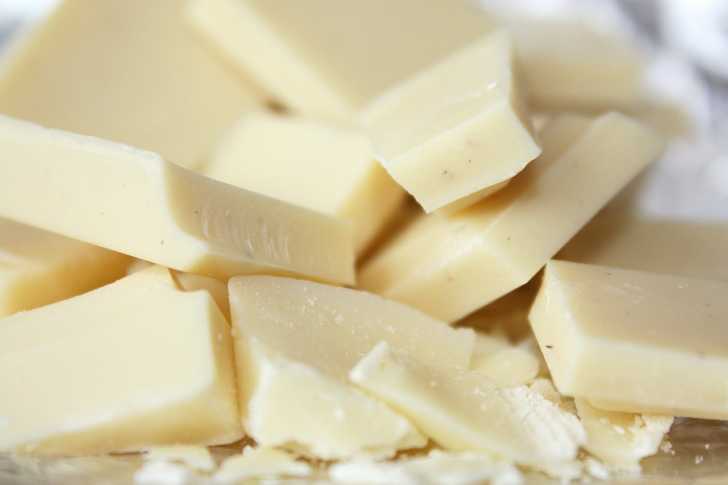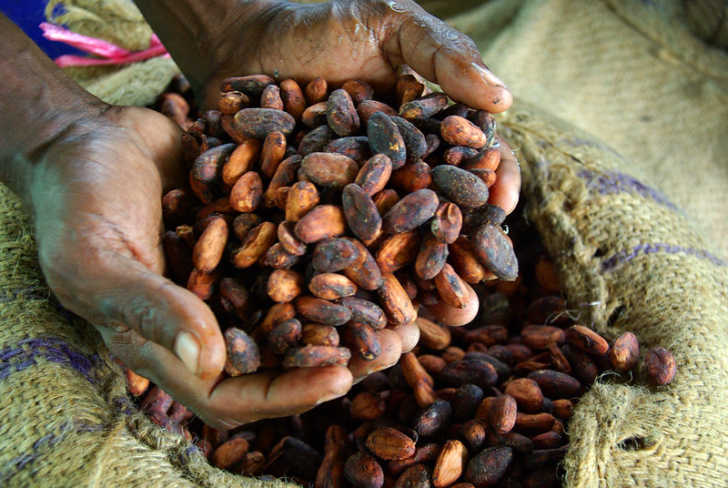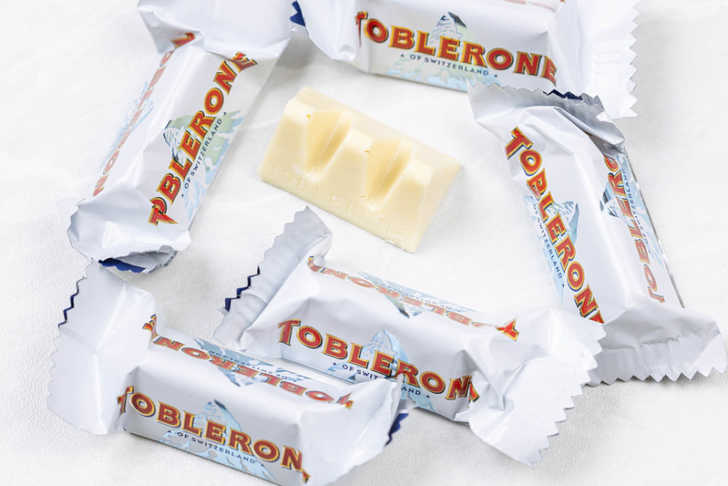
By now, you’ve probably heard rumors about white chocolate being a lie. As with so many of these things, a lot of the controversy stems from YouTube videos and articles that get blown out of proportion. There’s a truth to the claims that white chocolate isn’t technically chocolate, but I’m going to break down some of the confusion surrounding this sweet treat.
Let’s start off with what white chocolate actually is. White chocolate is made with a blend of sugar, cocoa butter, milk products, vanilla, and a fatty substance called lecithin. The process of turning a cocoa bean into what we know as chocolate is involved, to say the least, but basically, the bean is dried, roasted, and cracked open to reveal a nib. According to Bon Appétit, “Chocolate nibs are ground into a paste called chocolate liquor. Chocolate liquor can be separated into cocoa solids, which provide the flavor, and cocoa butter, which is the fat. Though white chocolate contains extracted cocoa butter, it lacks the component that defines ‘real’ chocolate.” However, this is enough for some people to run with, creating a snowball effect of misinformation.

Part of why white chocolate has such a bad reputation is because it contains additives such as palm oil. It didn’t always, though, and there are lots of brands that don’t use palm oil in their recipes. You may be surprised to learn that white chocolate was invented by Nestlé in Switzerland in 1930. Since then, cocoa butter has been prized not only by chocolatiers but cosmetic and pharmaceutical companies as well. Since the market for cocoa butter is so fierce, big manufacturers started substituting a percentage of the fat with other oils to keep the cost down.
Other, smaller companies, on the other hand, chose to handle the scarcity by making their own. Therefore, white chocolate is pretty much like every other kind of food out there – you get what you pay for. Plus, it’s not as if companies, both big and small, can just throw whatever they want into their chocolate and sell it. In fact, there are pretty high standards for white chocolate.

The Food and Drug Administration requires that chocolate bars must be made up of at least 10 percent cocoa mass, with no specifications about cocoa butter. White chocolate, on the other hand, has to have a cocoa butter content of at least 20 percent and does not require the inclusion of nibs.
Furthermore, plenty of culinary experts have come out of the woodwork to defend white chocolate. Pastry chef and author David Lebovitz, told Washington Post, “Bickering over the nomenclature becomes tiring. We still call hamburgers by that name, even though they are not made of ham, and milkshakes actually aren’t shaken these days, but blended. So I think it’s okay to group white chocolate in with the rest of the variety of things made from cacao beans, since they all have the same base.” Author Eagraine Yuh adds on to that, saying there are lots of benefits and uses for white chocolate. It’s a canvas for other flavors, with a surprising depth and utility.
So, next time you come across a recipe that uses white chocolate, or you have a craving for a white chocolate mocha, go ahead and embrace the cocoa butter-rich deliciousness that is white chocolate!













